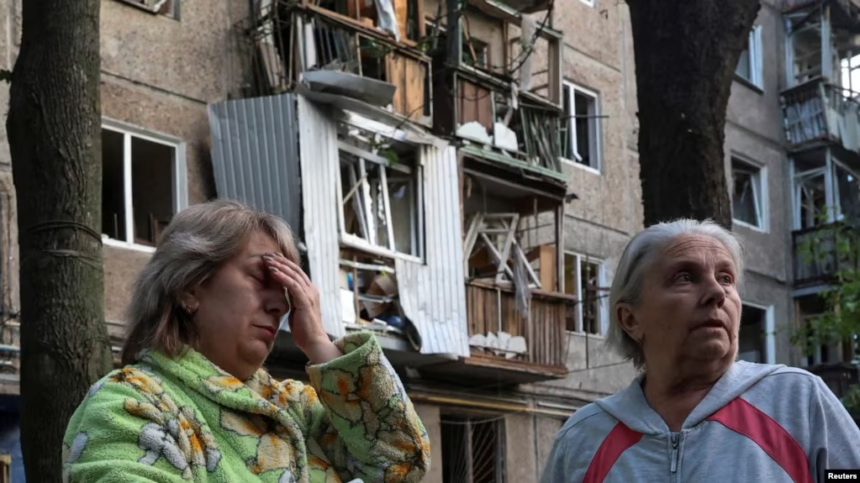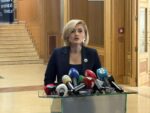Two people have been killed and dozens wounded in the early morning hours of Wednesday after Russian drone attacks targeted two districts of the Ukrainian city of Kharkiv, according to the city’s mayor.
Kharkiv Mayor Ihor Terekhov reported 17 drone strikes, including direct hits on multi-story buildings, private homes, playgrounds, businesses, and public transport. The intense attacks ignited fires in 15 residential units within a five-story building in the Slobidskyi district, while several houses were struck in the Osnovianskyi district.
“Apartments are burning, roofs are destroyed, cars are burned, windows are broken,” Terekhov said, adding that people might be trapped under the rubble. “We are holding on. We are helping each other. And we will surely survive,” Terekhov vowed. “Kharkiv is Ukraine. And it cannot be broken.“
Oleh Syniehubov, the governor of the Kharkiv region, stated on Telegram that nine wounded individuals, including a two-year-old girl and a 15-year-old boy, have been hospitalized.
US Military Aid to Ukraine to Decrease, Says Defense Secretary Hegseth
This attack follows other major strikes on Kharkiv and other Ukrainian cities in the past week, part of an intensified bombardment that Moscow claims is retaliation for drone attacks that destroyed dozens of Russian long-range bombers.
Meanwhile, in Washington, US Secretary of Defense Pete Hegseth stated that the US budget for 2026 will reduce military aid to Ukraine.
“This administration has a very different stance on that conflict,” Hegseth told a congressional committee on Tuesday. “We believe that a negotiated peaceful resolution is in the best interest of both sides and the interests of our nation.”
Heorhiy Tikhiy, a spokesperson for the Ukrainian Ministry of Foreign Affairs, previously stated that US military aid continues to arrive and Ukrainian diplomats are working to ensure its continuation. US Ambassador to NATO Matthew Whitaker said on June 4 that the Trump administration has not yet made decisions on future aid to Ukraine as it is currently “focused on preserving President Trump’s ability to end hostilities.”
Most of the committee’s questions to Hegseth pertained to the deployment of approximately 700 Marines to Los Angeles to assist over 4,100 National Guard personnel in protecting federal buildings and personnel amid protests against immigration enforcement actions. Hegseth hinted that the controversial use of US military troops within the United States would be expanded.
“I think we are entering a new phase, especially under President Trump with his focus on the homeland, where the National Guard and reserves become a key component of our security,” he said.







